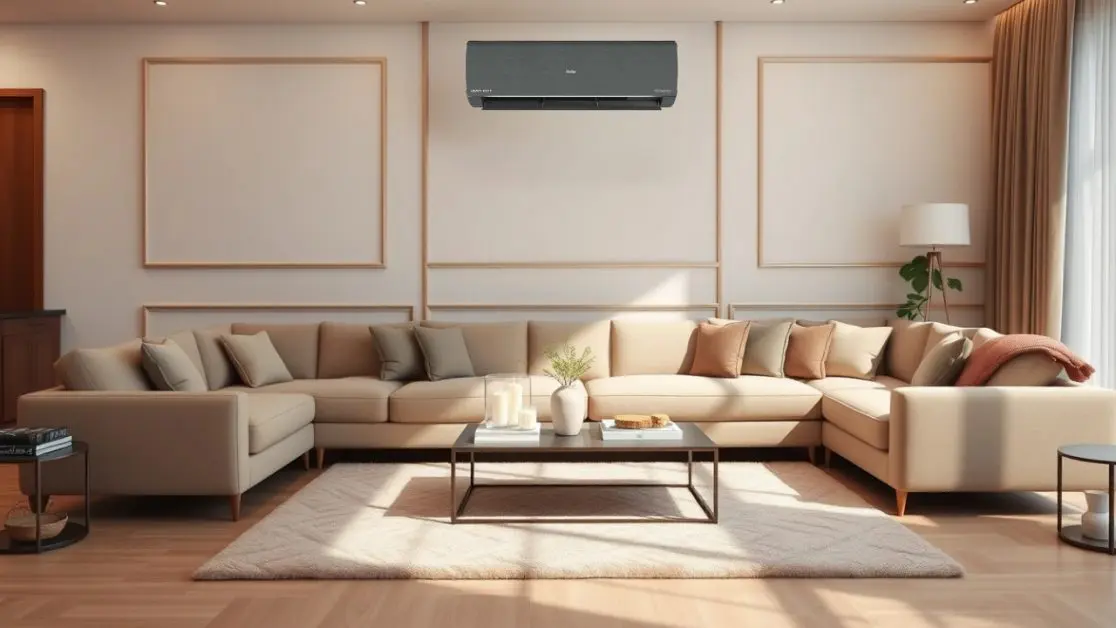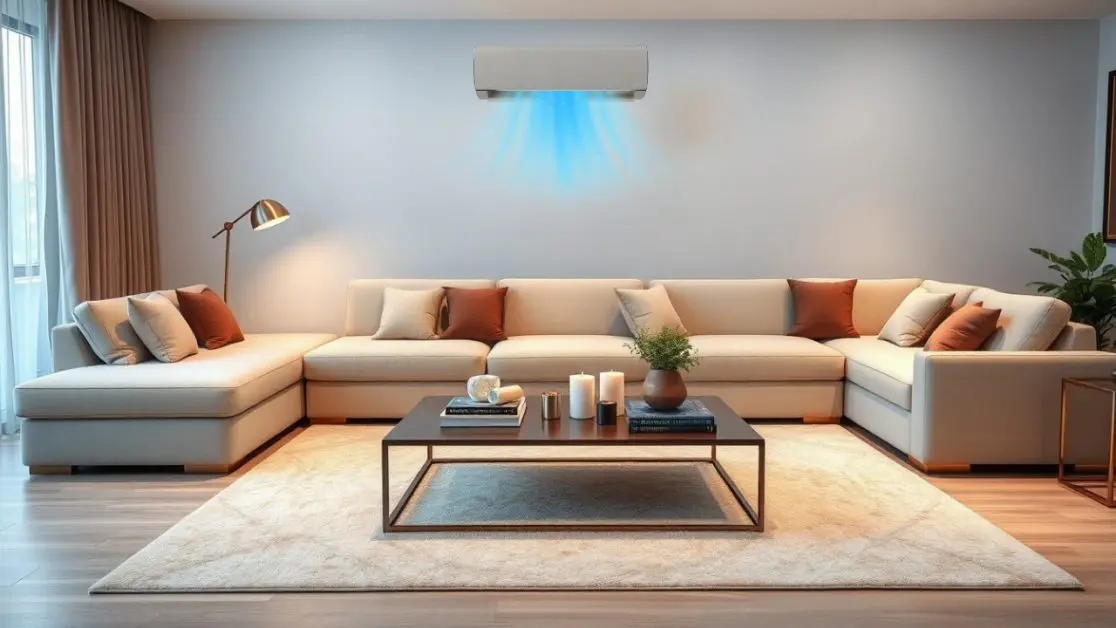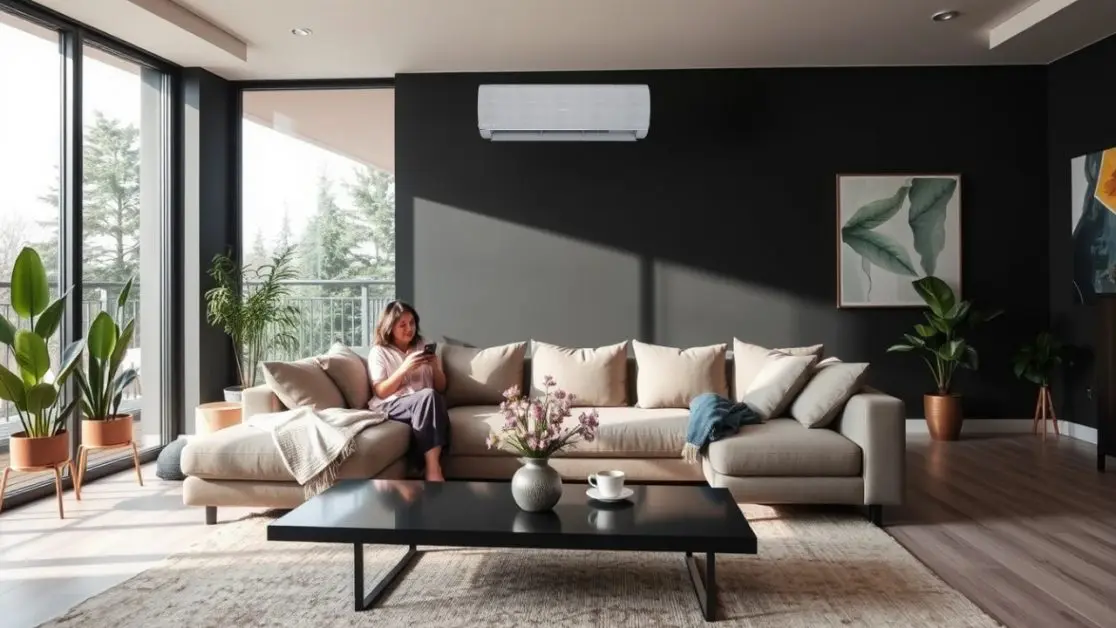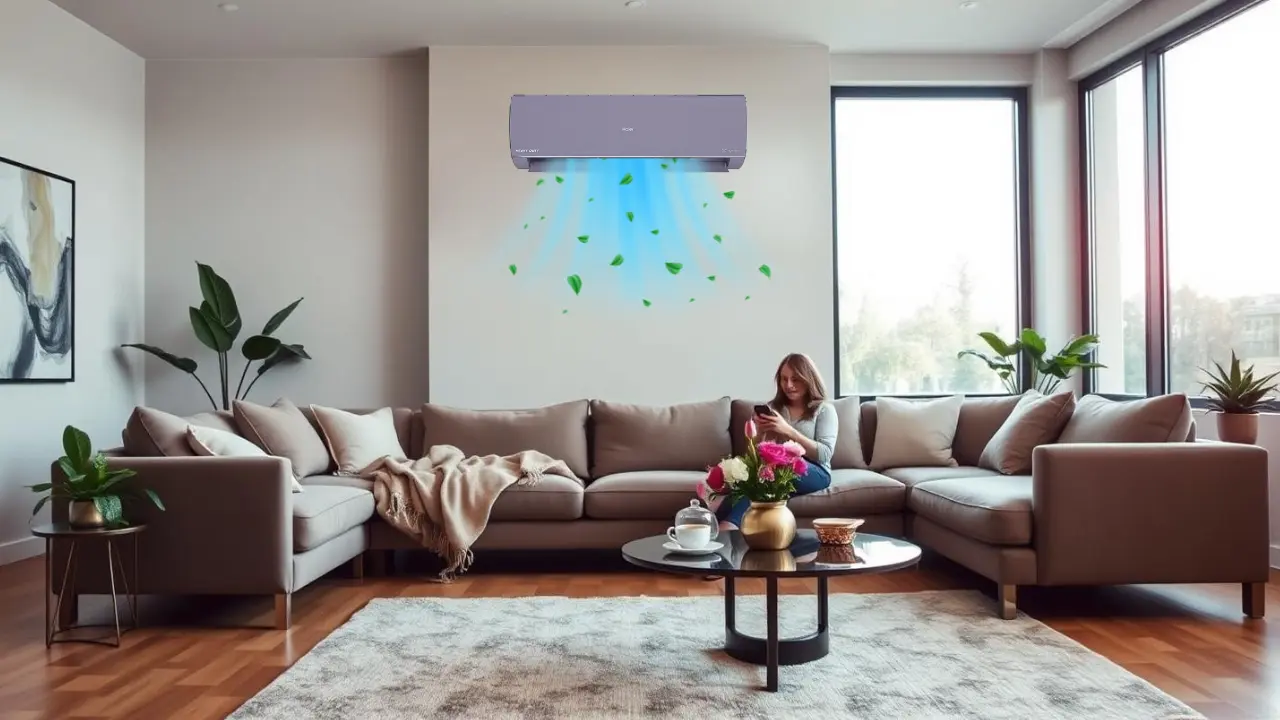Hey there! Thinking about getting a new AC?
You’re probably looking at all those cool features, how much energy it saves, and which brand is the best, right?
That’s all important stuff, but let me tell you, there’s one thing that really makes or breaks your AC experience: the tonnage.
Think of it like this: the tonnage is how strong your AC is. Get one that’s too weak, and you’ll be sweating even with it blasting. Get one that’s too strong, and your electricity bill will skyrocket!
Choosing the right tonnage is the secret sauce to staying comfy without burning a hole in your pocket. This guide will show you exactly how to figure out the perfect size AC for your space.
Let’s get started!
What Is AC Tonnage?
AC tonnage measures an air conditioner’s cooling capability and is expressed in tons. A cooling system that removes 12,000 British Thermal Units (BTU) is referred to as one ton of tonnage. The higher the tonnage, the greater the cooling power.
Many people assume that a larger AC tonnage provides more cooling output, but this belief is incorrect. An air conditioner with excessive cooling power operates too quickly, causing repeated startup and shutdown cycles. This raises indoor humidity, wastes electricity, and shortens the unit’s lifespan. On the other hand, an undersized air conditioner operates inefficiently, running continuously and consuming excessive energy.
Factors That Determine the Right AC Tonnage

Several factors influence the appropriate tonnage for an air conditioning system.
1. Room Size and Layout
The most crucial factor when selecting an air conditioner is the room’s dimensions. The number of British Thermal Units required for a small bedroom is significantly lower than that of a larger living room. Below is a general guideline:
| Room Size (sq. ft.) | Recommended AC Tonnage |
| Up to 120 sq. ft. | 1 Ton |
| 121 – 180 sq. ft. | 1.5 Ton |
| 181 – 250 sq. ft. | 1.6 Ton |
| 251 – 400 sq. ft. | 2 Ton |
Rooms with open layouts, high ceilings, or minimal partitions may require higher tonnage compared to enclosed rooms of the same size.
2. Climate and Ambient Temperature
Hot and humid climates, such as those in many parts of India, require air conditioners with elevated tonnage to maintain indoor comfort. The higher the outdoor temperature, the harder the AC must work to cool the space efficiently.
3. Number of Occupants
Human body heat contributes to the total thermal load within a room. More occupants generate more heat, requiring an AC system with higher tonnage to maintain desired cooling levels.
4. Sunlight Exposure and Insulation
Rooms with large windows, direct sunlight exposure, and poor insulation require additional cooling power. Proper insulation, along with the use of curtains or blinds, can help reduce the heat gain and optimize AC efficiency.
5. Electrical Appliances and Heat-Generating Devices
Appliances such as computers, televisions, and lighting contribute to indoor heat buildup. The presence of multiple heat-generating devices in a room may necessitate an AC with higher tonnage for efficient cooling.
The Consequences of Choosing the Wrong Tonnage

1. Inefficient Cooling
An undersized AC struggles to cool the space effectively, leading to uneven temperatures and discomfort.
2. High Energy Consumption
An oversized AC frequently turns on and off, consuming excessive electricity and resulting in higher energy bills.
3. Shorter AC Lifespan
Frequent startup and shutdown cycles due to improper tonnage selection cause wear and tear, reducing the air conditioner’s operational life.
4. Poor Humidity Control
An oversized AC cools the room too quickly, preventing it from running long enough to dehumidify the air properly, leading to clammy and uncomfortable indoor conditions.
Innovative AC Technologies for Better Tonnage Efficiency

Modern air conditioning systems offer advanced features that enhance tonnage efficiency and cooling performance.
1. Inverter Technology for Adaptive Cooling
Inverter AC models adjust compressor speed based on real-time cooling requirements. This enables consistent cooling without excessive energy consumption.
2. Intelli Convertible Modes
Brands like Haier offer convertible mode ACs, allowing users to adjust cooling capacity as needed. A 1.5-ton AC, for example, can operate at reduced capacity (e.g., 0.8 tons) when full cooling power is unnecessary, leading to energy savings.
3. Long Airflow and Hyper PCB for Uniform Cooling
Advanced cooling technologies, such as long air throw and Hyper PCB, help distribute cool air evenly across large areas for optimal comfort.
4. Frost Self-Clean and Sterilization Functions for Better Air Quality
The Frost Self-Clean feature removes dust and bacteria, promoting hygienic air circulation. This is especially beneficial for families with children or individuals with allergies.
Tips to Maximize AC Efficiency After Choosing the Right Tonnage
To ensure maximum AC performance, follow these best practices:
- Schedule regular maintenance, including filter cleaning and service checks, to prolong the AC’s lifespan.
- Enable Eco Mode to minimize energy usage during operation.
- Prevent cool air loss by ensuring doors and windows remain closed and the room is well insulated.
- Set the temperature between 24-26°C to balance comfort and energy savings.
- Use ceiling fans to enhance air circulation and reduce the AC’s workload.
Conclusion
Choosing the right AC tonnage is crucial for achieving optimal cooling performance, minimizing power bills, and extending the system’s lifespan. The appropriate capacity depends on factors such as room size, climate conditions, sunlight exposure, and real-world usage.
Investing in an inverter AC with convertible modes and advanced cooling features enhances long-term comfort and cost savings.
Haier India offers a range of energy-efficient, high-performance air conditioners equipped with intelligent cooling technologies. These modern cooling systems provide strong cooling power while ensuring energy efficiency, making them an ideal choice for year-round comfort.

